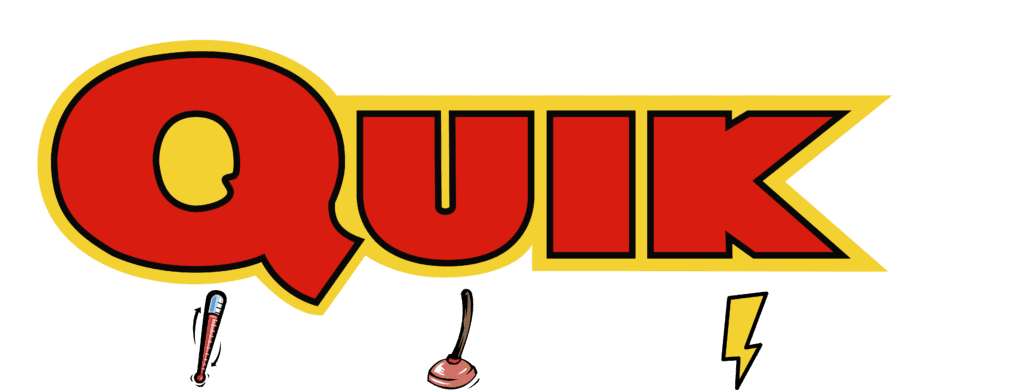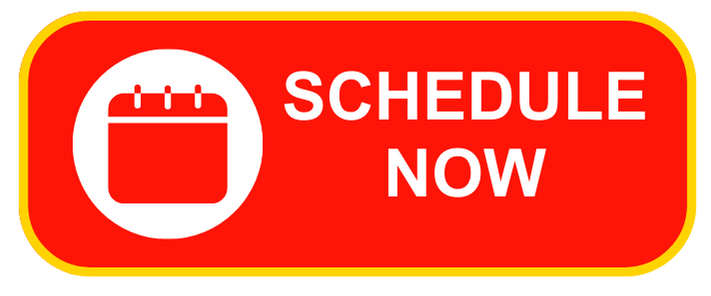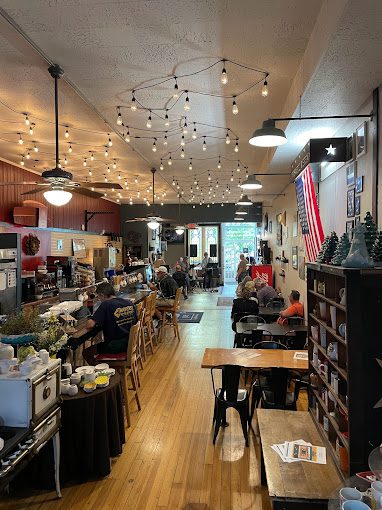Low Water Pressure Plumbing

Low Water Pressure in House
Ever notice your shower dribbling instead of spraying, or your faucets taking forever to fill a glass? That’s the drag of low water pressure. Don’t worry, Kokomo homeowners, this isn’t an uncommon problem, and there are solutions! Let’s explore why your water pressure might be low and what you can do to get it flowing normally again.
The Culprits Behind Low Water Pressure:
- Clogged Pipes: Over time, mineral deposits and sediment can build up inside your pipes, narrowing the passage and weakening the flow. This is especially common in homes with hard water.
- Closed Shut-Off Valves: There might be a partially closed valve somewhere in your plumbing system, unknowingly restricting water flow. This could be the main shut-off valve near your water meter or an individual valve under a sink or behind an appliance.
- Pressure Regulator Issues: Your home’s pressure regulator controls the incoming water pressure. If it’s malfunctioning, it could be limiting the flow even if the city pressure is normal.
- City-Wide Pressure Drop: Occasionally, the water pressure might dip due to repairs or maintenance work on the city’s main water lines. This is usually temporary, but you can check with your local water authority for updates.
Solutions to Boost Your Water Pressure:
- DIY Fixes: Before calling a plumber, there are a few things you can try yourself. Check all your shut-off valves around the house and make sure they’re fully open. Look for any visible leaks that could be stealing water pressure. If you’re comfortable, you can also try cleaning out faucet aerators, which can sometimes get clogged with mineral deposits.
- Calling in a Pro: For tougher clogs or if you suspect a problem with the pressure regulator, it’s best to call a licensed plumber. They have the tools and expertise to diagnose the issue and recommend the best course of action, which might involve cleaning pipes, repairing valves, or even installing a water pressure booster pump in some cases.
Tips to Prevent Low Water Pressure:
- Regular Maintenance: Schedule professional plumbing cleanings every few years to remove built-up sediment and keep your pipes in good shape.
- Address Leaks Promptly: Don’t ignore leaky faucets or dripping pipes. Fix them as soon as possible to prevent further pressure loss.
- Consider a Water Softener: If you have hard water, a water softener can help prevent mineral buildup in your pipes and minimize future pressure problems.
Remember: While some DIY solutions might work, it’s always best to consult a licensed plumber if you’re unsure about the cause of low water pressure or feel uncomfortable tackling the repairs yourself. They can ensure the job is done safely and effectively, getting your Kokomo home’s water pressure back to normal in no time!
What Causes Low Water Pressure in the Whole House?
Why Has My Water Pressure Gone Weak in Kokomo?
Ever notice your shower trickle instead of spray, or your faucets barely sputter? Low water pressure can be a real drag, making everyday tasks like washing dishes or rinsing vegetables a chore. If you’re facing weak water flow throughout your entire house in Kokomo, here are some possible culprits:
City Supply:
Sometimes, the issue lies beyond your house. The city might be experiencing maintenance work on the main water lines, affecting pressure in your neighborhood. A quick call to your local water department can confirm this.
Check the main shutoff valve for your house, usually located near the curb stop or water meter. Make sure it's fully open. A partially closed valve can restrict water flow.
Inspect visible pipes, joints, and fixtures for any signs of leaks. Even minovr leaks can significantly impact water pressure and flow.
Mineral buildup, especially in areas with hard water, can narrow your pipes and restrict water flow. This is more common in older homes with galvanized steel pipes.
A sudden decrease in water pressure could be due to various reasons such as a clogged pipe, a malfunctioning pressure regulator, sediment buildup in the pipes, or a leak in the water line. Check for any visible signs of leaks or damage to the pipes, and consider contacting a plumber to assess the issue further. Additionally, it might be beneficial to inquire with your water provider to see if any known disruptions or maintenance activities could be affecting the water pressure in your area.
Low water pressure issues can stem from various factors such as clogged pipes, faulty pressure regulators, or sediment buildup in faucets or showerheads. To address these concerns, start by checking for any visible blockages or leaks in pipes and fixtures. Next, clean or replace clogged aerators or showerheads. If the problem persists, consider consulting a professional plumber to inspect the pressure regulator and assess the overall plumbing system for any underlying issues. Additionally, regular maintenance like flushing out sediment from pipes can help prevent future occurrences of low water pressure.
The cost to fix low water pressure varies depending on the underlying cause and the extent of repairs needed. Minor issues like clogged pipes or faucets may require simple fixes, often costing less than hiring a professional. However, more complex problems such as issues with the water main or plumbing system may necessitate professional intervention, which could result in higher expenses. On average, homeowners can expect to pay anywhere from a modest fee for minor adjustments to a more significant sum for extensive repairs, with costs influenced by factors such as labor, materials, and the specific requirements of the repair job. It’s advisable to consult with a plumber to accurately assess the situation and determine the most cost-effective solution.
The lack of water running to your house could be due to various facYes, a plumber can typically fix low water pressure issues in a residential setting. They first diagnose the underlying cause, which can range from clogged pipes, sediment buildup, or faulty pressure regulators. Once identified, they employ various techniques such as flushing pipes, replacing damaged components, or adjusting pressure valves to restore optimal water flow. Depending on the complexity of the problem, the cost for such services can vary, but it’s generally considered a standard service within the plumbing profession.tors such as a water main break, shutoff valve closure, water supply interruption, pump failure, or plumbing issues within your property. A plumber can investigate the cause and restore your water supply.
The most common cause of low water pressure in residential settings is typically related to issues within the plumbing system, such as clogs or obstructions in pipes, sediment buildup in faucets or showerheads, or problems with the water supply line leading to the property. These issues can restrict the flow of water, resulting in reduced pressure at the taps. Additionally, leaks in the plumbing system can also contribute to decreased water pressure as water is lost before reaching its destination. Regular maintenance and prompt repair of plumbing infrastructure can help mitigate these issues and restore adequate water pressure.
Low Water Pressure in Kitchen Sink
Ever turn on the kitchen faucet only to be met with a wimpy trickle instead of a powerful stream? Disappointing, right? Having low water pressure in your kitchen sink can be a real drag, slowing down everything from washing dishes to filling pots. But fear not, fellow Kokomo residents! In most cases, this isn’t a major plumbing issue and can often be fixed with a little DIY magic.
Let’s explore some common culprits behind weak water flow and see how to get your kitchen faucet gushing again!
The Usual Suspect: The Aerator
This might sound fancy, but an aerator is a tiny little hero in your faucet. It’s that mesh screen attached to the tip of the spout. Its job? Mix air with water, giving you a nice aerated stream and saving water in the process. The downside? Over time, minerals in our Kokomo water can build up and clog those tiny holes, hindering water flow.


The good news: cleaning an aerator is a breeze! Here’s how:
- Turn off the water supply – Locate the shut-off valves under your sink, one for hot and one for cold. Turn them clockwise until snug.
- Unscrew the aerator – Most aerators unscrew by hand, but you might need pliers for a stubborn one (use a rag to avoid scratching).
- Inspect and clean – Look for any mineral buildup. Soak the aerator in vinegar for stubborn clogs or scrub with an old toothbrush.
Reattach and enjoy! – Screw the aerator back on and turn the water supply valves back on. Does the water flow freely now?
If cleaning the aerator didn’t solve the problem, there could be other reasons behind the low pressure. Here are a few to consider:
While some solutions are DIY-friendly, it’s always best to call a licensed plumber if:
- You’re uncomfortable working with plumbing fixtures.
- The problem seems more extensive, like a leak.
- You suspect a clog deeper in the pipes.
- Clogged supply lines: These are the hoses that bring water to your faucet. If they’re kinked or clogged, water flow suffers.
Pressure regulator issue: This device helps control water pressure throughout your home. If it’s malfunctioning, it can affect your faucet.
Here are some tips to keep your kitchen faucet flowing smoothly:
- Regularly clean your aerator. How often depends on your water hardness.
- Avoid using harsh chemicals on your faucet, which can damage the aerator.
- If you have hard water, consider installing a water softener for your entire home.
With a little troubleshooting and some preventative TLC, you can keep your kitchen faucet delivering the powerful water flow you deserve. But remember, if the DIY solutions leave you stumped, don’t hesitate to call a Kokomo plumber for help!
Low Water Pressure in Bathroom Sink
Ever turn on the faucet in your bathroom sink, only to be met with a sad, little trickle instead of a refreshing flow? Disappointing, right? Low water pressure can be a real drag, making brushing teeth, washing hands, and shaving a chore. But fear not, fellow Kokomo residents! In most cases, this isn’t a plumbing emergency, and there are a few easy solutions you can try yourself.


Let's talk about aerators. These little screens are attached to the tip of your faucet and serve two purposes:
1: They mix air with water, creating a fuller stream and conserving water.
2: They act as a filter, catching tiny bits of debris that might come from your pipes.
The problem is, that these aerators can get clogged up with mineral deposits (think tiny limescale villains) or trapped debris, hindering water flow. So, the first place to check for a low-pressure solution is your trusty aerator.


Grab some tools:
You'll need a wrench or pliers (adjustable ones work best) and a towel (to catch any drips).
Find the aerator:
It's usually the small, screw-on piece at the tip of your faucet.
Unscrew it gently:
Use your wrench or pliers to turn it counter-clockwise (lefty loosey!). Be careful not to over-tighten it when you put it back on.
Inspect and clean:
Look for any mineral buildup or debris. You can soak the aerator in a vinegar solution (50% white vinegar, 50% water) for about 30 minutes to loosen any stubborn clogs. Then, use a soft brush to clean it gently.
Reassemble:
Rinse the aerator and screw it back onto the faucet hand-tight. Turn on the faucet and see if the water pressure has improved!


Closed shut-off valves:
There are usually shut-off valves under your sink, one for each hot and cold water line. Make sure they're fully open.
Clogged pipes:
This is less common, but if the issue persists after checking the aerator, there might be a clog deeper in the pipes. In this case, consulting a licensed plumber is recommended.
Low Water Pressure in Shower
Anyone who loves a refreshing shower knows the frustration of a weak trickle instead of a powerful spray. Here in Kokomo, with so many great shower options available, low water pressure can put a damper on your shower experience. But fear not, fellow Kokomoans! There are several reasons why your shower might be lacking pressure, and most of them have easy solutions you can try yourself.
1. Diagnosing the Problem:
Before diving into fixes, let’s see if we can pinpoint the culprit. Here are some common causes of low shower pressure:
- Clogged Shower Head: Minerals in our water can build up over time, creating tiny blockages inside the showerhead. This restricts water flow and weakens the spray.
- Faulty Shower Valve: The shower valve controls the water flow and temperature. If it’s malfunctioning, it can hinder the pressure from reaching the showerhead.
- Blocked Pipes: Sometimes, mineral deposits or even debris can clog the pipes leading to the showerhead, reducing water flow.
- Pressure Regulator Issues: Your home might have a pressure-reducing valve that controls incoming water pressure. If it’s malfunctioning or set too low, it can affect your shower’s pressure.
2. DIY Solutions:
- Clean the Shower Head: This is a simple fix that often works wonders. Unscrew the shower head and soak it in a vinegar solution (50% white vinegar, 50% water) for a few hours. This will dissolve mineral deposits.
- Check the Shower Valve: Look for any visible signs of damage or leaks around the valve handle. If you’re unsure about its condition, it’s best to consult a plumber.
- Now that we have some suspects, let’s explore some solutions you can try at home:
- Inspect the Shower Hose: Sometimes, a kinked or damaged shower hose can restrict water flow. Try straightening the hose or replacing it if necessary.
3. When to Call a Plumber:
If you’ve tried these solutions and your shower pressure remains low, it’s time to call in a professional plumber. They have the expertise and tools to diagnose the problem accurately. Here are some situations where a plumber’s help is recommended:
- Blocked Pipes: While some clogs might be DIY-friendly, extensive blockage within the pipes requires a plumber’s touch.
- Pressure Regulator Issues: Adjusting a pressure regulator can be tricky and should be done by a qualified plumber to ensure proper water pressure throughout your home.
- Shower Valve Replacement: Replacing a faulty shower valve requires specific plumbing knowledge and tools.
4. Keeping the Flow Strong:
Here are some tips to keep your shower pressure healthy in the long run:
- Regularly clean your showerhead to prevent mineral buildup.
- Avoid harsh chemicals in your shower products, as they can damage the showerhead and contribute to clogging.
- Be mindful of water pressure during peak usage times in your neighborhood.
By understanding the causes of low water pressure and taking preventative measures, you can ensure a happy showering experience in your Kokomo home!
Water Problems in My Area
Have you noticed your shower dribbling instead of spraying, or your faucets taking forever to fill a glass? These could be signs of low water pressure in your Kokomo home. Don’t worry, you’re not alone! Many homeowners face this issue, and luckily, there are steps you can take to diagnose the problem and get your water flowing normally again.
Several things can contribute to low water pressure in your Kokomo house:
Clogged Pipes:
Over time, mineral deposits and sediment can build up inside your pipes, narrowing them and restricting water flow.
Faulty Fixtures:
A broken shower head, clogged faucet aerator, or malfunctioning pressure regulator on your appliances can lead to a drop in pressure.
Main Line Issues:
Occasionally, the problem might lie with the main water line feeding your house or the city's main supply. This is less common, but it's good to be aware of the possibility.
Emergencies like no running water can occur at any time, day or night. It's essential to choose a plumbing service that offers emergency services and has Before you call a plumber, there are a few things you can try yourself to diagnose the issue:
Identify the Problem:
Is the low pressure affecting just one faucet, or your entire house? This can help narrow down the cause.
Check Your Fixtures:
Look for any visible clogs in your showerhead or faucet aerators. These small screens are usually easy to remove and clean.
Inspect Your Pressure Regulator:
Many appliances like washing machines and dishwashers have a pressure regulator valve. Consult your appliance manual to see if it's something you can adjust or replace yourself.a reputation for responding quickly to urgent calls. Ensure that they provide 24/7 availability so that you can get assistance whenever you need it.
Here are some tips to help prevent low water pressure in the future:
Schedule Regular Plumbing Maintenance: Having your plumbing system inspected and cleaned every few years can help prevent clogs from accumulating.
Address Leaks Promptly:
Leaky faucets and pipes not only waste water, but they can also contribute to mineral build-up further down the line.
Use Water Softener if Needed:
If your area has hard water, a water softener can help prevent mineral deposits from forming in your pipes.
By understanding the causes and solutions for low water pressure, you can keep your Kokomo home's plumbing system functioning smoothly. Remember, if the problem seems beyond your DIY skills, don't hesitate to call a professional plumber to get the job done right.
By understanding the causes and solutions for low water pressure, you can keep your Kokomo home’s plumbing system functioning smoothly. Remember, if the problem seems beyond your DIY skills, don’t hesitate to call a professional plumber to get the job done right.
Troubleshoot Checklist:
- Single Fixture: Is the low pressure only affecting one faucet or showerhead? This might indicate a clogged aerator or a faulty fixture.
- Whole House: Is the weak flow happening everywhere? This suggests a broader issue like clogged pipes or a malfunctioning pressure regulator.
- Clean the Aerator: Most faucets have a removable aerator screen. Unscrew it, clean any debris, and reattach it.
- Check for Clogs: Look for any visible blockage in the showerhead or faucet itself. Try cleaning with vinegar or a small brush.
- Pressure Regulator: Some appliances like washing machines have a pressure regulator valve. Consult your manual to see if it needs adjusting.
- Shut-Off Valves: Make sure any shut-off valves for appliances are fully open.
- Neighbor Check: Ask your neighbors if they’re experiencing similar problems. This might indicate a city main line issue.
- Contact Local Water Authority: If your neighbors also have low pressure, contact your city’s water department to inquire about any main line repairs.
- DIY Doesn’t Work: If you’ve tried these steps and the pressure remains low, call a licensed plumber.
- Suspected Leak: If you suspect a leak behind walls or under floors, it’s best to call a professional for proper diagnosis and repair.









